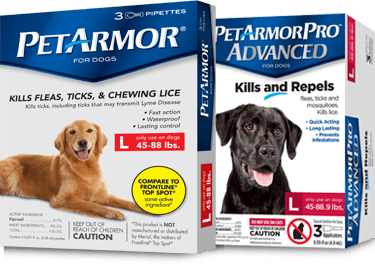There is nothing that makes my stomach turn faster than a plump tick on my dog or cat. I remember years and years ago seeing one on our family dog and wondering why there was a jelly bean stuck to her fur when it wasn’t anywhere close to Easter and no one had had jelly beans in the house (I would have known about THAT, let me tell you). When I showed my dad, he explained what it was. I was so grossed out but at the same time, felt so so bad for our dog. Ever since then I’ve been hyper vigilant about ticks. For pets and people. Some kinds of ticks can make our furry family members very sick but they can also make people very sick. Ticks carry deadly diseases such as Lyme Disease and Rocky Mountain spotted fever. I try to just keep them far, far away from all of us. Getting rid of ticks isn’t always a one-and-done kind of activity, unfortunately.
I am being compensated by PetArmor for my participation in this campaign with Mom It Forward Blogger Network.

So how DO you keep ticks away from you, or start the process of getting rid of ticks?
1. Keep your living quarters cooler, not warmer. Fleas and ticks love to be warm and snuggly.

2. Use a product like PetArmor solution on cats and dogs solution for flea and tick protection for both dogs and cats. It KILLS the four major types of ticks including those that carry Lyme disease. PetArmor contains the same No. 1 vet-recommended active ingredient Fipronil found in Frontline brand products, and provides the same protection against adult fleas and ticks but is available for significantly less.
-
While pet owners are very aware of the danger of bloodsuckers like ticks, fleas and mosquitos during the summer months, many do not realize that these bugs stick around well into the cooler fall season. In fact, some species of ticks, such as the American Dog Tick and the Deer Tick, are more active during the transition into fall. Fleas also survive happily in a nice warm home.
-
The adult stage deer tick actually begins its feeding activity about the time of first frost (or early October throughout its range), and it will latch onto any larger host (cat to human) any day that the temperature is near or above freezing. Adult female deer ticks can transmit Lyme Disease. Another tick that carries Lyme disease is the Blacklegged tick. The adult stages of this tick begin to become active as the season changes from summer to fall.
-
3. Get rid of those weeds. Stay on top of things.
4. Check, check and check regularly. Check people and animals for any ticks regularly- we check nightly.
5. When going in woods, wear long pants and tuck them into your boots if possible.
6. Don’t let kids play in tall grass/weeds. If they do- check thoroughly for ticks.
7. Take off the shoes. Always. Ideally, keep shoes out of the house altogether (that’s not doable for us, but we do remove shoes in the breezeway. There’s a lot more than ticks that come in with shoes so really, just keep them at the door!!
Angela says
I have been using PetArmor on my two dogs and it seems to work very well.
Danielle @ We Have It All says
We don’t have any dogs anymore… but are planning on getting 2 within the next year so I will keep this in the back of my mind.